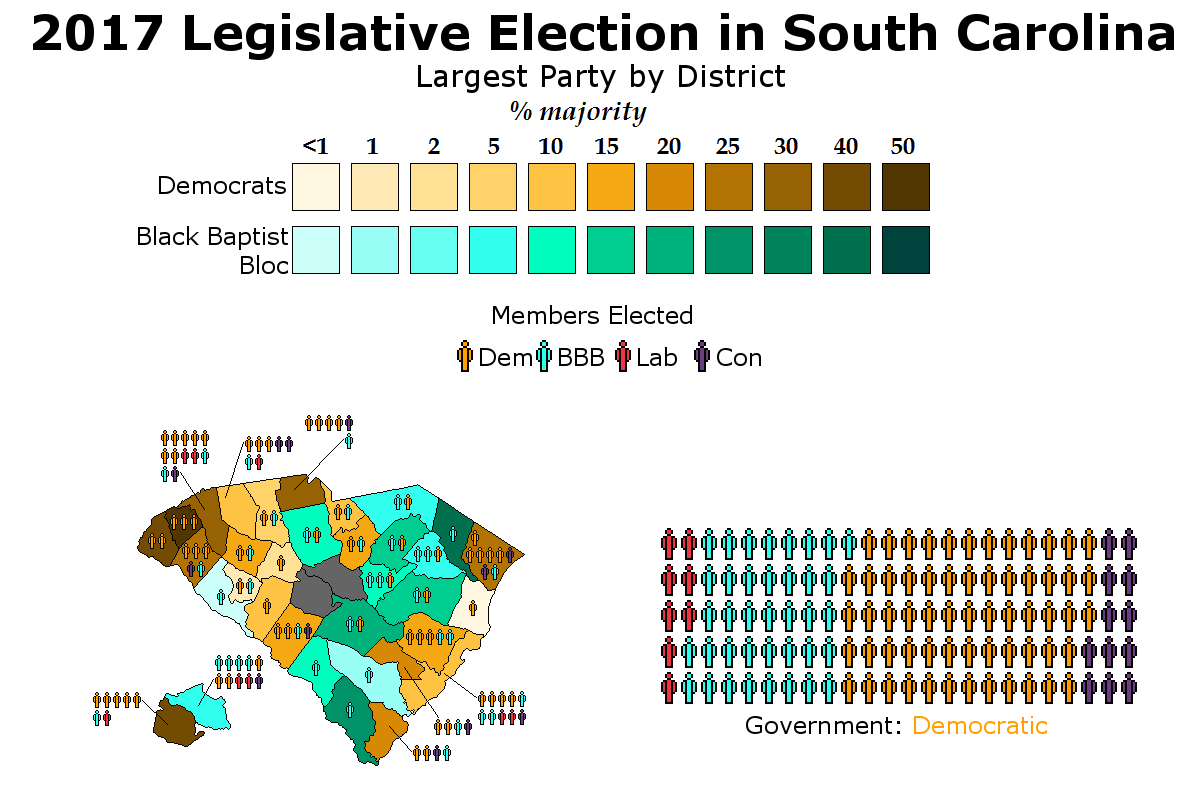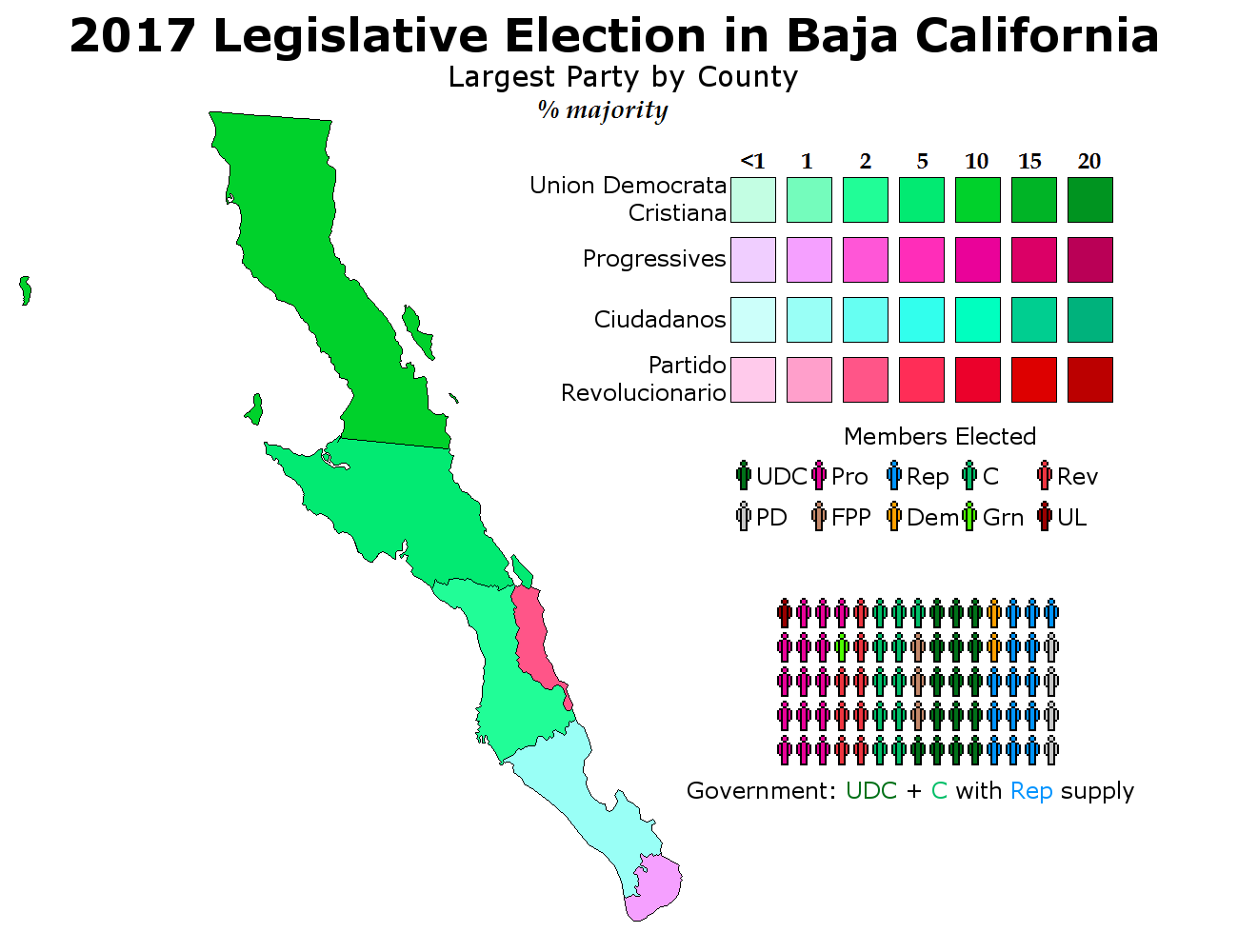MoralisticCommunist
Banned
The Seventh Party System: Part XXII
Part I - Metropotamia
Part II - Alta California
Part III - North Carolina
Part IV - New Jersey
Part V - Adams
Part VI - Alabama
Part VII - Rhode Island
Part VIII - Sequoyah
Part IX - Assenisipia
Part X - East Florida
Part XI - Tennessee
Part XII - Kansas
Part XIII - Dakota
Part XIV - Arizona
Part XV - Delaware
Part XVI - Oregon
Part XVII - Ozark
Part XVIII - New Hampshire
Part XIX - Western Connecticut
Part XX - New York
Part XXI - Santo Domingo
South Carolina is the archetypal Deep Southern state, being dominated politically by the Democratic party, with the Black Baptist Bloc as the main opposition.
While in the era immediately following the end of the Civil War South Carolina was one of a few Southern states with an African-American majority, emigration towards other parts of the US either in the Caribbean or towards the North meant that ever since the 1890s the state has been a white majority state, ruled by white southerners.
Being a part of the Solid South ever since voting restrictions were placed on its African American populations, to this day the state has never had a non-Democratic/National Union government. Even during the Second Great Depression, the Democrats were simply forced to enter into coalition with the Constitution party. However in this year's election, they have managed to gain enough seats back from Labor to grant an absolute majority, returning South Carolina to its standard Democratic regime.
Government:
Democrats - A socially conservative but economically centrist party, as in most Deep Southern states the Democratic party dominates South Carolina unequivocally.
Opposition:
Black Baptist Bloc - The party of conservative and rural African Americans, they have become less and less significant as demographics have turned the state whiter and whiter over the decades.
Constitution - The party of hardcore social conservatism and economic liberalism, they have continued to grow in the state of South Carolina as the state has developed. And in the most recent election of 2017, they have managed to surpass even Labor's vote share in the state for the first time in history.
Labor - The party of left wing whites and urban blacks, they have suffered greatly as national trends turn away from Labor.

Credit for the basemap goes to Chicxulub.
Part I - Metropotamia
Part II - Alta California
Part III - North Carolina
Part IV - New Jersey
Part V - Adams
Part VI - Alabama
Part VII - Rhode Island
Part VIII - Sequoyah
Part IX - Assenisipia
Part X - East Florida
Part XI - Tennessee
Part XII - Kansas
Part XIII - Dakota
Part XIV - Arizona
Part XV - Delaware
Part XVI - Oregon
Part XVII - Ozark
Part XVIII - New Hampshire
Part XIX - Western Connecticut
Part XX - New York
Part XXI - Santo Domingo
South Carolina is the archetypal Deep Southern state, being dominated politically by the Democratic party, with the Black Baptist Bloc as the main opposition.
While in the era immediately following the end of the Civil War South Carolina was one of a few Southern states with an African-American majority, emigration towards other parts of the US either in the Caribbean or towards the North meant that ever since the 1890s the state has been a white majority state, ruled by white southerners.
Being a part of the Solid South ever since voting restrictions were placed on its African American populations, to this day the state has never had a non-Democratic/National Union government. Even during the Second Great Depression, the Democrats were simply forced to enter into coalition with the Constitution party. However in this year's election, they have managed to gain enough seats back from Labor to grant an absolute majority, returning South Carolina to its standard Democratic regime.
Government:
Democrats - A socially conservative but economically centrist party, as in most Deep Southern states the Democratic party dominates South Carolina unequivocally.
Opposition:
Black Baptist Bloc - The party of conservative and rural African Americans, they have become less and less significant as demographics have turned the state whiter and whiter over the decades.
Constitution - The party of hardcore social conservatism and economic liberalism, they have continued to grow in the state of South Carolina as the state has developed. And in the most recent election of 2017, they have managed to surpass even Labor's vote share in the state for the first time in history.
Labor - The party of left wing whites and urban blacks, they have suffered greatly as national trends turn away from Labor.

Credit for the basemap goes to Chicxulub.

